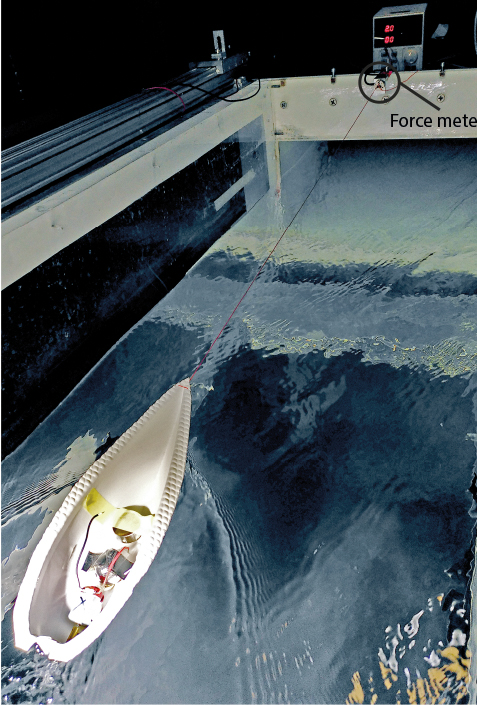The AI powerboat challenge
Introduction
Self-driving, autonomous boats allow unmanned navigation and operation and are used in maritime intelligent logistics, automated pontoon construction and ocean current research. These boats are key to intelligent navigation, management, maintenance and freight transport and form the technical core of future intelligent water transport networks. The construction of an autonomous self-driving boat requires the coordination of several components of which hull construction is the main focus. Reducing the resistance and maximizing the driving force are crucial objectives.
Materials & Methods
A variety of tests was performed, for example of the limitations of the electric motor, of the boat hulls regarding the drag coefficient, of surface coatings regarding hydrophobic characteristics and on propellers for maximum performance. By using hydrophobic surface coatings and optimizing the choice of propellers, the boat speed was enhanced. The electric motor was improved by exchanging the copper wires with ceramically insulated wiring. This increased performance to 80 W. Programming the boat on the basis of a state machine allowed the autonomous navigation alongside buoy lines.
The spectral components of the buoy were determined by measuring bright, white LED lighting that was transmitted through the buoy with a Hopocolor OHSP-350P spectrometer. Taking into account phase shifts based on different angles of incidence, an optical long pass filter (Quantum Design ET542lp) witha cut-off wavelength of 542 nm was chosen.
Conclusion & Outlook
The team successfully developed a fast boat with automatic navigation. The combination of hull design, choice of propeller, surface coating and improvement of the electric motor resulted in optized boat speed. A program based on a state machine allows the autonomous navigation of the boat. Future improvements could be the implementation of circuit protection mechanisms, optimization of the hull design and further image recognition refinements. All in all, the project is an important step towards intelligent, autonomous boats that can be used in various maritime applications.
Source: The AI Powerboat Challenge, H. Fang, M. Garger, A. Rusch, und D. Schönenberger, ETH Zürich, 16. Februar 2024




